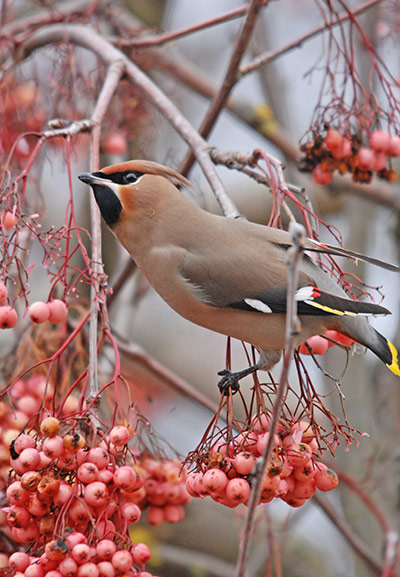TOP STORIES
 Bird flu detected in 2 wild duck corpses at Fukushima reservoir
Bird flu detected in 2 wild duck corpses at Fukushima reservoirHighly pathogenic H5N1 bird flu has been detected in the corpses of two migratory wild ducks found at a reservoir here, prefectural authorities announced on Jan. 19.
From Jan. 4 to Jan. 10, the prefecture gathered seven bird corpses from the reservoir and sent them for testing at the National Institute for Environmental Studies in Tsukuba, Ibaraki Prefecture. Four of the corpses tested positive for Type-A influenza, and further investigation at Hokkaido University in Sapporo found that two had the highly pathogenic H5N1 bird flu. The other two are still being investigated.
... The discovery of H5N1 bird flu in Koriyama is the sixth confirmed case in the country since October of last year, when it was detected in duck droppings in Wakkanai, Hokkaido.
The Mainichi Daily News - mdn.mainichi.jp (source: ProMed Mail)
20 Jan 2011
 Location: Koriyama, Fukushima Prefecture, Japan - Map It
Location: Koriyama, Fukushima Prefecture, Japan - Map It Photo courtesy of The Mainichi Daily News
CWD Found in Minnesota Deer
A preliminary screening test strongly indicates that a deer harvested by a hunter last November near Pine Island in southeast Minnesota had Chronic Wasting Disease (CWD), according to the Minnesota Department of Natural Resources (DNR).
If the National Veterinary Services Laboratory in Ames, Iowa, confirms the University of Minnesota's preliminary diagnosis, it marks the first time CWD has been found in Minnesota's wild deer herd. An official confirmation is expected by next week.
wdio.com-www.wdio.com
21 Jan 2011
Location: Pine Island, Minnesota, USA - Map It

More CWD News
Ten Additional Deer Test Positive for Chronic Wasting Disease in West Virginia [source: ProMed Mail]
 Migrating animals might decrease the spread of bird flu and other infectious diseases
Migrating animals might decrease the spread of bird flu and other infectious diseasesWith millions of birds descending on Delaware Bay during migration, the propensity for bird flu (H5N1) to spread among flocks—and potentially among humans—has been a pressing concern. And as animals, from gray whales to monarch butterflies make epic treks of thousands of kilometers each year, the role of these travelers in spreading highly pathogenic diseases along the way has been a key question for ecologists and epidemiologists alike.
At first brush, a long-distance voyage might sound like an excellent opportunity for substantial disease spread. But perhaps unexpectedly animal migration might actually help keep super-pathogenic diseases in check, argued a team of researchers behind a new review paper.
...Birds that migrate across continents tend to have a higher viral load than those that stay at home year round. But for some of those species, migrating might help to avoid the more virulent pathogens that can accumulate in one environment. Other animals might use this migratory escape method as well. For example, previous research has suggested that reindeer (Rangifer tarandus) shrug off pesky warble flies (Hypoderma tarandi) by finding new summer pastures away from where fly larvae have been shed in the spring.
Scientific American - www.scientificamerican.com
21 Jan 2011
K Harmon
Photo courtesy of Scientific American
Cited Article
Animal Migration and Infectious Disease Risk.
Science. 21 Jan 2011; 331 (6015): 295-302. S Altizer et al.
Science. 21 Jan 2011; 331 (6015): 295-302. S Altizer et al.
OTHER WILDLIFE HEALTH RELATED NEWS
Photo courtesy of The Guardian- The week in wildlife – in pictures
- American cougars on the decline: 'We’re running against the clock,' says big cat expert
- UK wild bird numbers continue to fall
- Eggs show arctic mercury cycling may be linked to ice cover
- Smokies details bat syndrome in new podcast; Park researchers to survey caves again this winter
- Coral Bleaching Prompts Thailand to Close Diving Sites [Reuters video]
- FWP Commission supports studying bison relocation
- Solved: Dead Birds Mystery In Dacono [pesticides poisoning] [Colorado, USA - Map It
 ]
] - Rats and Plague, from a 1911 issue of Scientific American





